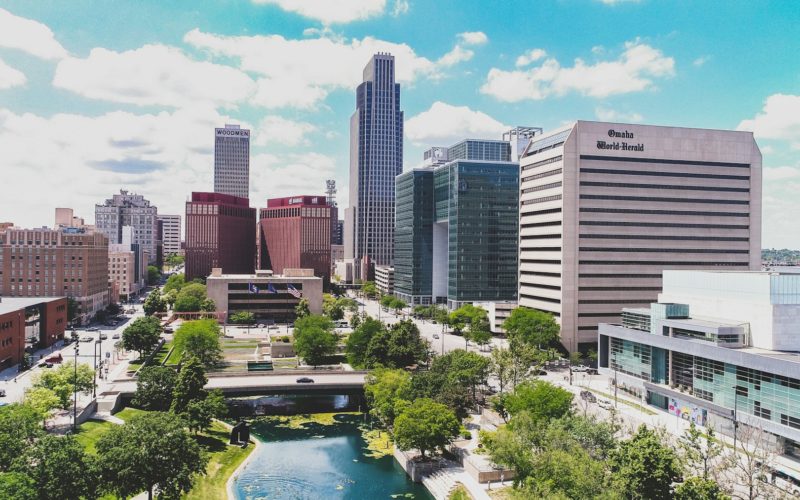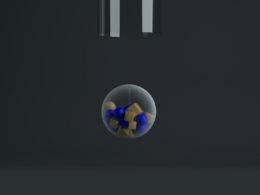When you think of cities leading the way in sustainability and urban innovation, does Omaha come to mind? For most people, probably not. Yet this Midwestern city has quietly built a strong case for itself through meaningful infrastructure projects, safety initiatives, and environmental planning. Instead of chasing headlines, Omaha is focusing on practical, long-term solutions that improve quality of life and prepare the city for the future.
From expansive trail systems and green stormwater infrastructure to its commitment to Vision Zero, Omaha is making real progress on multiple fronts. These efforts are not just about urban beautification — they’re about reducing emissions, preventing traffic deaths, and making neighborhoods more livable. Let’s take a closer look at why Omaha may be one of the Midwest’s most underrated green cities, and what its evolving approach to urban planning tells us about where it’s headed.
Omaha’s Quiet Revolution in Urban Sustainability
Omaha has been making significant strides in green infrastructure, even if it hasn’t grabbed national headlines. One of the city’s key initiatives is the Clean Solutions for Omaha (CSO) Program, which focuses on improving stormwater management and reducing pollution from combined sewer overflows.
The city is investing in permeable pavement, rain gardens, and bioretention systems that filter runoff before it reaches rivers and streams. These updates not only protect the environment but also reduce the strain on aging sewer systems.
What’s noteworthy is how Omaha is blending utility upgrades with community value. Projects like the revitalization of Fontenelle Lagoon and Hanscom Park aren’t just about managing water — they’re about creating inviting, healthier public spaces. When stormwater improvements lead to greener, more usable parks, it’s a win for both infrastructure and residents. While larger cities may have more funding, Omaha’s approach proves that targeted, thoughtful upgrades can make a real difference.
Walkability and Trails: Where Omaha Really Shines
Omaha’s trail system is one of its most underrated features. With over 80 miles of paved trails and even more unpaved ones, the city has created a robust network that supports both recreation and alternative commuting. Trails like the Keystone and Riverfront Trails connect neighborhoods, parks, and commercial areas, making it easier for residents to choose walking or biking over driving. It’s a practical investment in health, sustainability, and community connection.
The city’s historic boulevard system, originally designed for aesthetic appeal and leisurely drives, now plays a modern role in promoting walkability. Streets like Florence and Fontenelle Boulevards feature green medians and wide sidewalks that naturally encourage pedestrian movement. While Omaha still leans car-dependent in many areas, these design choices offer a strong foundation for a more walkable future. With consistent upgrades and better transit connections, Omaha could become a regional model for smart, human-focused urban design.
Vision Zero: Omaha’s Push for Safer Streets
Omaha adopted the Vision Zero strategy to eliminate traffic fatalities and serious injuries, joining a national movement focused on road safety through infrastructure, policy, and public education. The approach reframes accidents as preventable events rather than inevitable ones. Omaha’s Vision Zero efforts emphasize lowering speed limits in critical areas, redesigning intersections, and improving pedestrian crossings to make streets safer for all users.
Progress has been steady, though not without challenges. Implementation takes time, and while some corridors have seen upgrades, others still lack basic pedestrian infrastructure. Public awareness campaigns are helping shift attitudes toward safer driving, but Omaha must continue investing in street redesigns to see lasting results. For residents impacted by traffic collisions, consulting an experienced Omaha car accident lawyer can provide clarity on legal options, especially when navigating insurance claims or determining liability in the aftermath of a crash.

Comparing Omaha to Other Midwest Cities
Compared to nearby cities like Des Moines or Kansas City, Omaha is quietly ahead in several areas. Its green infrastructure investments are more comprehensive, particularly in how they merge stormwater management with public space improvement.
While Kansas City has a larger bike share system and Des Moines has a strong downtown walkability score, Omaha stands out for the scale of its trail system and its integration with broader environmental efforts.
That said, Omaha still faces limitations. Public transit is underdeveloped compared to some regional peers, and certain neighborhoods lack safe, walkable access to basic services. Winter conditions also make year-round walkability harder to achieve. But by focusing on long-term infrastructure improvements rather than temporary fixes, Omaha is building a solid path forward. Its progress may not always be flashy, but it’s consistent and community-centered.
What’s Next: Climate Action & Resilience Plan
The city is currently developing a Climate Action & Resilience Plan that aims to bring all of these initiatives under a unified strategy. The plan will address emissions reduction, renewable energy use, transportation improvements, and climate adaptation. It signals a shift from isolated projects to a more holistic vision for sustainability. Public input has been a key part of the planning process, showing Omaha’s commitment to transparency and collaboration.
This plan is especially important as Omaha grows and faces new environmental challenges. It aligns well with existing programs like CSO and Vision Zero, suggesting that the city isn’t starting from scratch — it’s building on a strong foundation. By connecting climate goals with traffic safety and urban planning, Omaha is positioning itself as a future-ready city. The real test will be in how quickly and effectively these plans move from paper to pavement.
Conclusion
What does it take for a Midwestern city to redefine what sustainability and safety look like? In Omaha’s case, it’s a combination of strategic infrastructure planning, community engagement, and a willingness to rethink long-standing urban norms.
From managing stormwater with green solutions to expanding an impressive trail system, the city has made steady progress that often flies under the radar. Programs like Vision Zero show that Omaha is not just responding to today’s challenges — it’s actively trying to prevent tomorrow’s.
The road ahead isn’t without obstacles. Car dependence, gaps in transit infrastructure, and seasonal challenges still affect how people move through the city. But Omaha’s Climate Action & Resilience Plan, along with its ongoing green and safety initiatives, demonstrates a city with a clear direction. It’s not chasing trends — it’s creating a model for other cities of its size to follow. If Omaha stays on this path, it won’t just be one of the Midwest’s greenest cities — it could become one of its most forward-thinking.












